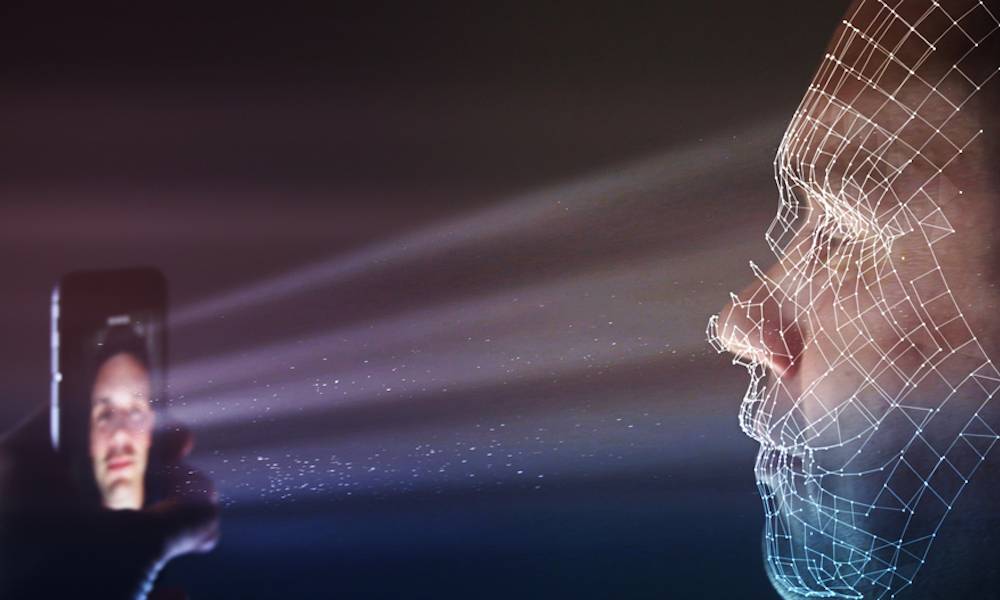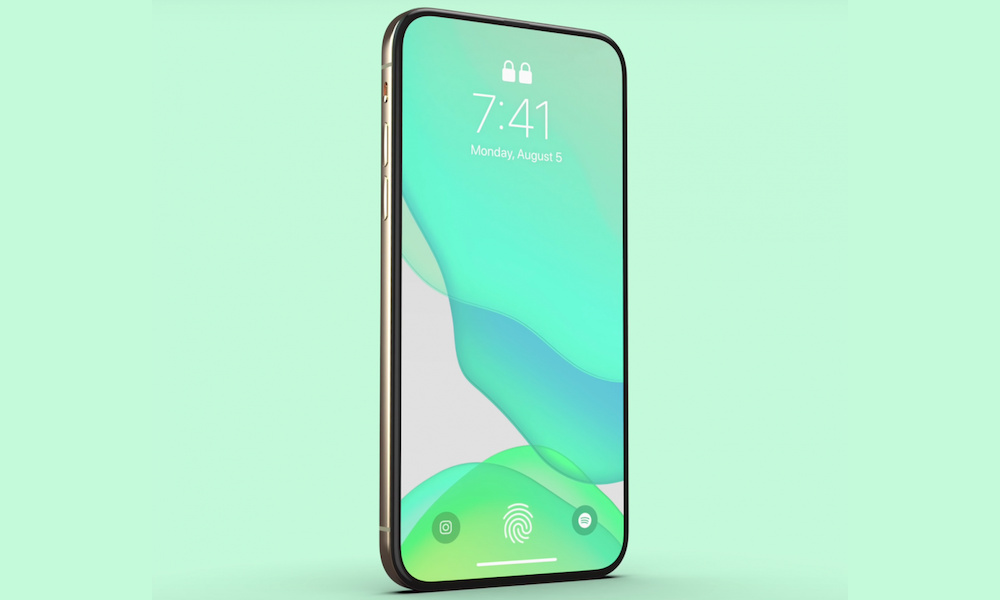Report: Apple Still Working on In-Display Touch ID, But When’s It Coming?
 Credit: TargetYouTube / ScienceandKnowledge
Credit: TargetYouTube / ScienceandKnowledge
Toggle Dark Mode
It looks like the rumours of under-display Touch ID’s demise may have been greatly exaggerated. A new report suggests that the technology has merely been delayed rather than cancelled and adds that Apple’s in-display fingerprint sensor could do much more than just unlock your iPhone.
Rumours of Apple’s work on putting a Touch ID sensor under the iPhone display have been circulating for more than half a decade. They pre-date the 2017 iPhone X by at least a few months. Of course, back then, almost nobody saw Face ID coming, so moving the fingerprint sensor under the display seemed like the most logical way forward for the new bezel-less “iPhone 8” (nobody saw the name “iPhone X” coming either).
The advent of Face ID threw a bucket of cold water on the notion of an in-display Touch ID sensor coming to an iPhone. By the following year, most reliable analysts were suggesting Apple had no plans to bring under-display Touch ID to future iPhones. Even though this technology was already on its way to becoming a staple of flagship Android smartphones, Apple’s Face ID was a better system in almost every way — and consumers agreed.
With Face ID taking the industry by storm, it was easy to believe that Touch ID was on its way out — that it would quickly fall by the wayside as Apple released more and more Face ID-capable devices. However, it seems things have gotten a bit more complicated than that.
The Murky History of Under-Display Touch ID
The 2018 report from analyst Ming-Chi Kuo was not the final word on the matter. By the following year, a source no less reliable than Apple Vice-President Greg Joswiak confirmed that Touch ID wasn’t entirely dead — although he stopped short of going into any details on Apple’s future plans for it beyond acknowledging that “Touch ID will continue to have a role” in Apple’s product lineup.
Specifically, Joswiak, who would later be promoted to Senior VP upon the ascension of Phil Schiller to Apple Fellow, seemed to be mainly pointing to devices with traditional home buttons, such as the iPad and iPhone SE.
However, he sang the praises of Touch ID as “a great technology,” and he was correct that Apple hasn’t abandoned it in the traditional sense. Even most of the latest iPads still feature a Touch ID sensor — it’s just been moved to the side button. MacBooks and the Magic Keyboard for Apple’s 24-inch iMac also still feature Touch ID sensors for authentication.
As great as Face ID is, the biggest obstacle to making it the standard on Apple’s entire product lineup is cost. The sensors and components that power the TrueDepth camera system don’t come cheap, which is why it’s been confined to Apple’s most expensive products.
It’s also important to note that Kuo didn’t say under-display Touch ID was never coming. No reputable supply chain analyst would be foolish enough to make such a prediction; since their information is based on the components and partnerships Apple is lining up, their clairvoyance only extends 2–3 years into the future, at best. In 2018, Kuo merely said it wasn’t on the roadmap for 2019.
By late 2019, new reports suggested Apple was once again working to develop reliable ultrasonic Touch ID sensors, with some suggesting they could appear in the 2020 iPhone — as an alternative to Face ID rather than a replacement for it.
However, other reports suggested Apple was developing it only for use in a lower-cost iPhone model to be sold in emerging markets that couldn’t bear the higher cost of an iPhone with the Face ID system. This also came at a time when some believed Apple needed to build a special iPhone just for China to combat weakening sales in that country. It’s unclear whether Apple was ever considering such a move, but it turned out to be unnecessary anyway; by the following year, the iPhone 11 had turned things around in China.
Nevertheless, rumours of Apple’s work on an under-display Touch ID sensor persisted, with some suggesting it could form part of a new iPhone SE or iPad Air with an edge-to-edge screen. When the 2020 iPad Air came along later that year, it did indeed have the same expansive screen as the more expensive iPad Pro, but the Touch ID sensor had been moved to the side button rather than being placed under the display.
Another prevailing theory was that Apple would add Touch ID to its flagship iPhone 13 lineup to complement Face ID. This gained traction as the global COVID-19 pandemic dug in and mask-wearing became commonplace. Proponents of Touch ID suggested this would be a great alternative to Face ID in such cases, but Apple had a better solution: making Face ID work with masks.
When is In-Display Touch ID Coming?
A year ago, we heard from our own sources that Apple was no longer working on under-display Touch ID, preferring to focus on improving its under-display camera system for Face ID instead.
That lines up with other recent reports we’ve seen, and there’s little doubt that Apple is hard at work on this. Apple has reportedly been working on getting rid of the iPhone’s notch? for years; the iPhone 14 Pro Dynamic Island is just a step on that much larger journey.
However, that doesn’t mean Apple’s plans for in-display Touch ID are dead for good; they may have just been placed on the back burner for now, as recent reports suggest.
New information shared by South Korean leaker yeux1122 cites industry sources who believe that Apple will eventually bring in-display Touch ID to the iPhone, but not until it’s perfected its under-display Face ID camera system.
From their sources, yeux1122 predicts that in-display Touch ID will come 2–3 years after under-panel Face ID debuts. Since that’s expected to happen with next year’s iPhone 16, this means in-display Touch ID could arrive as soon as the 2026 iPhone 18, which is around the time that Apple is expected to move the entire front-facing camera under the display.
More Than Just Touch ID
It’s always been a point of confusion as to why Apple seems to be taking so long to develop an under-display fingerprint sensor. After all, this has been around for years on Android handsets. While these sensors haven’t been without problems, those have been the exceptions. Overwhelmingly, the technology works quite well, so it’s hard to see how there’s anything Apple needs to “perfect” here like it did with Face ID compared to competing facial recognition systems.
However, if yeux1122’s information is accurate, it seems that Apple hasn’t been content to simply put a basic fingerprint sensor into the iPhone. Apple wants to build a sensor that will read your fingerprint very accurately — and quickly decide when it can’t — while also being able to pick up health information.
Specifically, sources indicate Apple is working on a way for the in-display fingerprint sensor to also measure a user’s blood oxygen saturation and pulse rate.
Considering Apple’s health ambitions, that’s not the least bit surprising. However, it’s also something that requires a lot more research and development to perfect. It’s also consistent with how Apple rolls; the company doesn’t merely copy technology already being used elsewhere — it improves upon it.
[The information provided in this article has NOT been confirmed by Apple and may be speculation. Provided details may not be factual. Take all rumors, tech or otherwise, with a grain of salt.]










